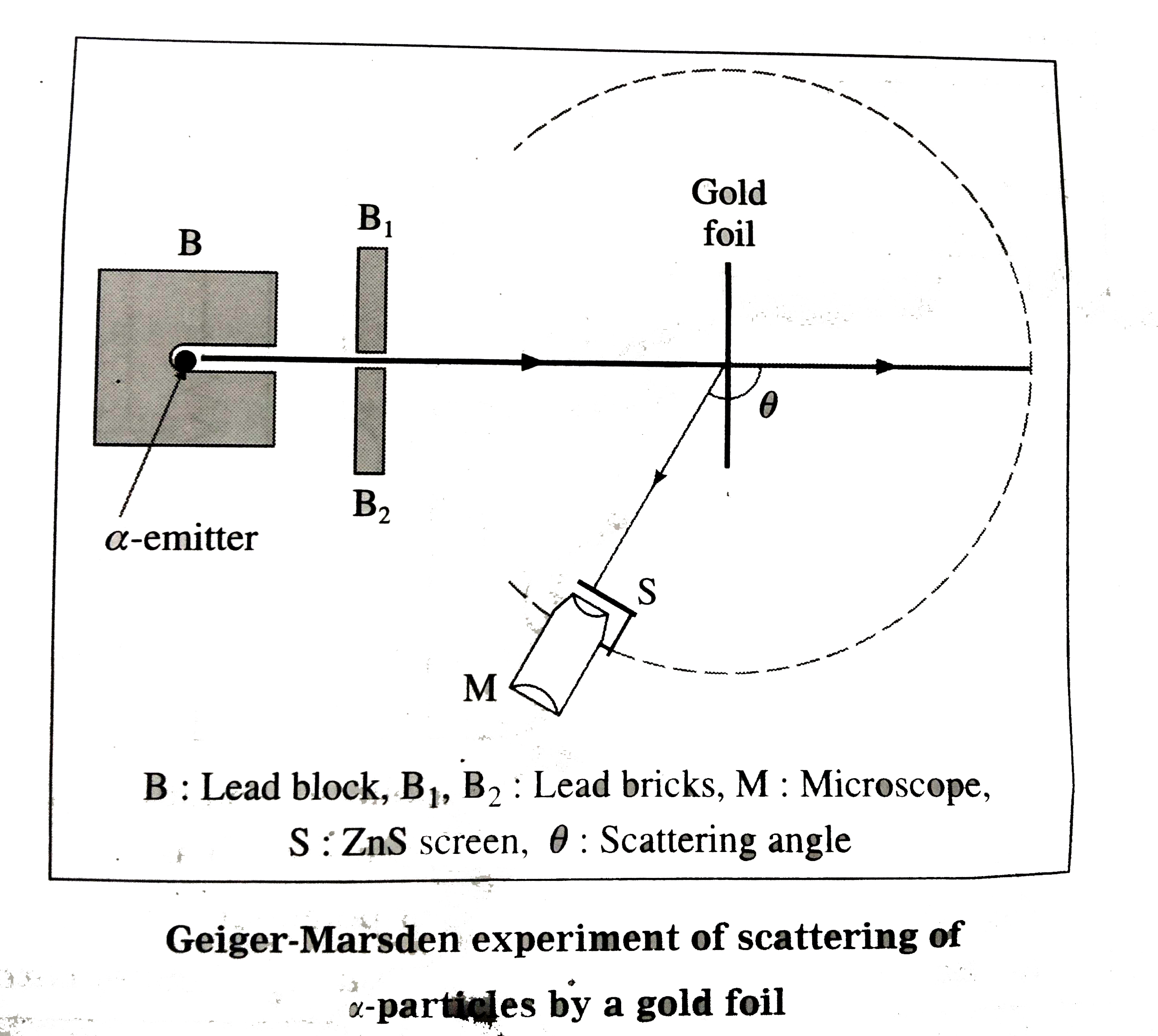With the help of a neat labelled diagram, describe the Geiger-Marsden experiment.
The Geiger-Marsden -scattering (or gold foil) experiment (1908) : Geiger and Marsden made a stream of -particles strike a very thin gold foil about 40 thick. Their apparatus is as shown.

Apparatus : A radium compound, an intense source of -particles, was placed in the lead enclosure B, provided with a small hole. The stream of as -particles was collimated by lead bricks. The number of particles scattered through each angle were counted by a rotatable detector. The detector consisted of a small zinc sulphide screen S at the focus of a low power microscope M. Each incidence produced a scintillation-a momentary pinpoint of fluorescence. these scintillations were observed and counted using the microscope.
Observations : Most of the -particles passed through the foil almost undeviated, with less than 0.2 % deflected by more than . Still smaller fractions were found to be deflected by or more, sometimes almost straight back towards the source.
Related Playlists
- BOOK - NAVNEET PUBLICATION - MAHARASHTRA BOARDCHAPTER - EXPERIMENTS AND DIAGRAMSEXERCISE - ELECTRONS AND PHOTONS1videos
EXPERIMENTS AND DIAGRAMS
- BOOK - NAVNEET PUBLICATION - MAHARASHTRA BOARDCHAPTER - DISTINGUISH BETWEENEXERCISE - Assingment3videos
DISTINGUISH BETWEEN
- BOOK - NAVNEET PUBLICATION - MAHARASHTRA BOARDCHAPTER - EXPLANATION, CHARACTERISTICS AND PROPERTIES EXERCISE - Assignments2videos
EXPLANATION, CHARACTERISTICS AND PROPERTIES
Similar Questions
With the help of a neat and labelled diagram, describe reflex arc.
View SolutionWith the help of a neat and labelled diagram, describe reflex arc.
View SolutionDraw a labeled diagram of male reproductive system.
View SolutionWith the help of a neat and labelled diagram, describe the development of female gamletophyte of angiospersms.
View SolutionWith the help of a neat and labelled diagram, describe the human male reproductive system.
View SolutionWith the help of a neat and labelled diagram describe the development of female gametophyte of angiosperms.
View SolutionWith the help of a neat and labelled diagram describe steps in recombinant DNA technology.
View SolutionWith the help of a neat and labelled diagram, describe Wastson and Crick's model of DNA.
View SolutionWith the help of a neat and labeled diagram describe Watson and Crick's model of DNA.
View SolutionWith a neat labelled diagram describe Wilfley table method.
View Solution

